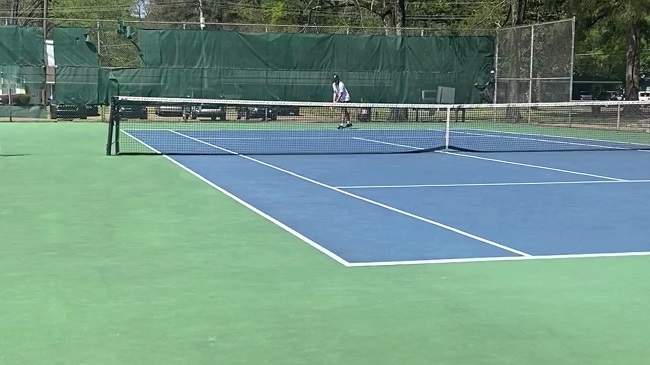Knowing the dimensions and layout of the tennis court is crucial, as the markings there define the limits of each shot. A tennis court is 2,808 square feet in size (78 feet long by 36 feet wide), but only half of that is used for singles play. The singles court is the same length as the doubles court, but narrower at 27 feet in width, for a total area of 2,106 square feet.
Names of The Lines On a Tennis Court
Tennis shots must stay within the lines painted on the court.

1. Definition of Baseline
At the beginning of each point, whether you are serving or waiting for your opponent to serve, you should begin the game by positioning yourself just behind the baseline. Most of the action in a modern game takes place along the baseline.
2. Singles as a Supporting Role
The down-the-line balls you place here will force your opponent to the sidelines of the singles court.
3. The Doubles’ Bench
In doubles play, the court is extended to 11 metres in width.
4. Net
When hitting shots down the line, keep the net’s lower centre of gravity in mind. You should also try playing volleys closer to the net.
5. Centralized Support Line
The service areas are split down the middle.
6. Service Container
One must serve the ball into the service box of the player across from them. Each game should begin with a serve that lands in the service box to your left. If you want to play into the right-hand service box on your second serve, you should shift to the left side of the court. Swap positions until one team has served all of their games.
7. Type of Service
In order to be “called in,” a ball must land within, or on, both the outer service line and the inner centre service line of the appropriate service box.
8. The Double Tramway
This is the extra area that can be used for play when playing doubles.
9. The Midpoint of the Baseline
When you’re serving, stand to one side of the tiny dot in the centre. If you put yourself here, you’ll be able to get the most out of any court case involving a return.
For those who have never seen a tennis court before, all those lines may seem unnecessary. Knowing the rules of the game, you’d anticipate seeing a rectangle with a net in the middle, but what are all the other lines for?
There was a time when the court wasn’t even a perfect rectangle. In 1874, Walter Wingfield constructed the first official lawn tennis court, an hourglass-shaped court with a net between 5 and 7 feet in height.
Although the net was still 5 feet high and several of the “boxes” were wider than they are now, by 1877 the All England Club had established a rectangular court design in anticipation of the first Wimbledon Championships. When the net was lowered to its current height of 3 feet in 1882, the court’s layout didn’t change much else.
Clearly, This Layout has Lasted the Test of Time, but What Do All these Lines Represent?
Understanding the structure and dimensions of the court is crucial to tennis since the markings on the court dictate the bounds for each shot.
With dimensions of 78 feet in length and 36 feet in width, a tennis court has a total area of 2,808 square feet, but only half of this space is ever in use during singles play. The singles court is 27 feet wide and the same length as the doubles court, for a total of 2,106 square feet.

